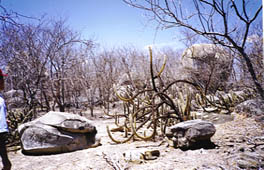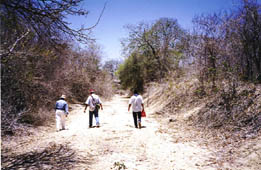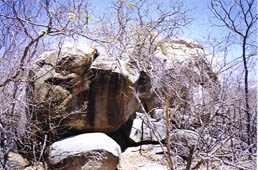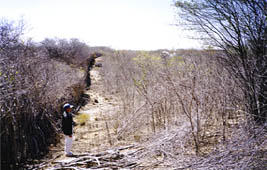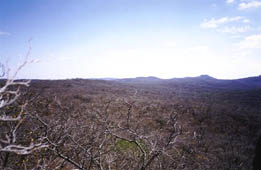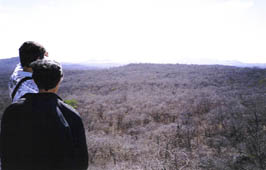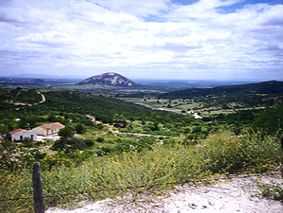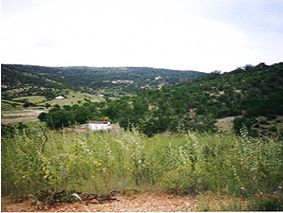|
|
||||||||||||||||||
| Physiognomy
The
"caatinga", is an ecosystem localized in the semi-arid region
of northeastern Brazil. It presents a xerophytic vegetation well adapted
to hydric shortage.
The Seridó region, comprises part of the States of Paraíba and Rio Grande do Norte. Its vegetation is relatively scarce with the predominance of a herbaceous stratum composed by the "panascu" grass (Aristida sp), separated groups of cactus (xique xique, coroa de frade, etc.) and disperse shrubs and trees, principally of "juremas", "catingueiras", "pereiros" and "imburanas". Today, due to deforestation (caused by wood and firewood extraction, coal production, etc.), agriculture (cotton plantations) and in a minor level of cattle exploitation, we find in the Seridó many areas with secondary vegetation, predominating grasses and legumes.
|
||||||||||||||||||

